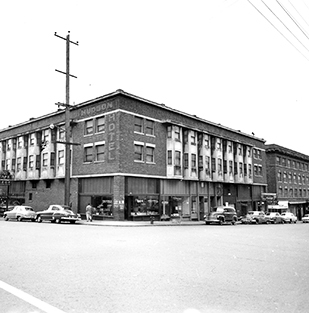Last week’s issue of the Seattle Weekly, included a story by Ellis E. Conklin about the Wah Mee building, in Seattle’s International District, the site of a notorious crime where 13 people killed on Feb. 18, 1983. Built in 1909, the building, housed immigrants bent on striking gold or finding a new life in America. Later, a notorious gambling parlor and nightclub was established in in its basement. It caught fire on Christmas Eve last year. Sometime soon, part of the building will be demolished. Plans are being made to save as much as possible of the rest of the 105-year old building.
In his story, Conklin talks to the people who live and work in the International District — referred to by locals by what they say is its real name — ‘Chinatown.’ Through personal conversations and extensive research, Conklin describes how district has been affected by the murders and the Christmas Eve fire and, what the neighborhood — both past and present — means to them.
Here are some excerpts from Conklin’s story:
The [Wah Mee] began as a boarding house, built in 1909 by three Scandinavian men, who named it the Nelson, Tagholm & Jensen Tenement. Later it became the Hudson Hotel, and soon after the Louisa Hotel: 120 rooms for Chinese, Japanese, and thousands of Filipino immigrants—“Alaskeros,” they were called—who would stay in Seattle before being dispatched by labor contractors to work in Alaska’s sardine and salmon canneries.
“People don’t think of the history and the beauty that was in this building,” muses Anita Woo. This was a special place. It meant so much to the early immigrants. It is a huge part of the history of Chinatown.”
The thrilling prospect of unearthing gold had already brought a wave of Chinese into the neighborhood in the late 1800s.
Says Rebecca Frestedt, the city’s historic-preservation coordinator for the Chinatown International District: “This building is not yet a landmark, but it is so much a part of the fabric of the larger historic district.”
As Roosevelt’s New Deal put a few dollars in people’s pockets, Jackson Street, which runs through the neighborhood, emerged as the hotbed of Seattle’s jazz scene. The Northwest Enterprise, a Seattle-based African-American newspaper, penned this about Jackson Street in the early 1930s: “[I]t attracts persons from all sections of the city and numerous migrants who are attracted by the bright lights and allurements. And there are allurements, if you know where to find them . . .”
Of all the gambling joints in Chinatown, none rivaled the Wah Mee Club in terms of sheer elegance. It was one sexy place in its time — and what a run it had. From its earliest years in the 1920s, when it was called the Blue Heaven, through the 1950s, the Wah Mee, secreted away in a spacious basement space in the Louisa Hotel, reeked of delightful decadence.
There was dancing, and boozing at its long, sumptuously curved bar; mah-jongg and pai gow, and stacks of silver dollars on gambling tables beneath dimly lit ornamental lanterns and rich deep carpets. Smoking Lucky Strikes, people of all races partied hard into the night, their waiters clad in white suits and black ties.
“The Wah Mee was host to some of the highest-stakes gambling in Seattle,” notes Todd Matthews, a local journalist who spent a decade researching and writing an e-book about the Wah Mee massacre, which he published in 2011. “Winners,” he wrote, “went home with tens of thousands of dollars after a single night of gambling.”
The place operated illegally, like at least 40 other illicit clubs in the Chinatown area, police estimate. Security was strict and required those entering to pass through a series of doors where private members were “buzzed” in through each door. The conspicuous gambling den was often raided, and in the early 1970s, the Wah Mee, whose English translation is “beautiful China,” fell on hard times—as did the rest of the former hotel.”
For the entire story go to www.seattleweekly.com.


